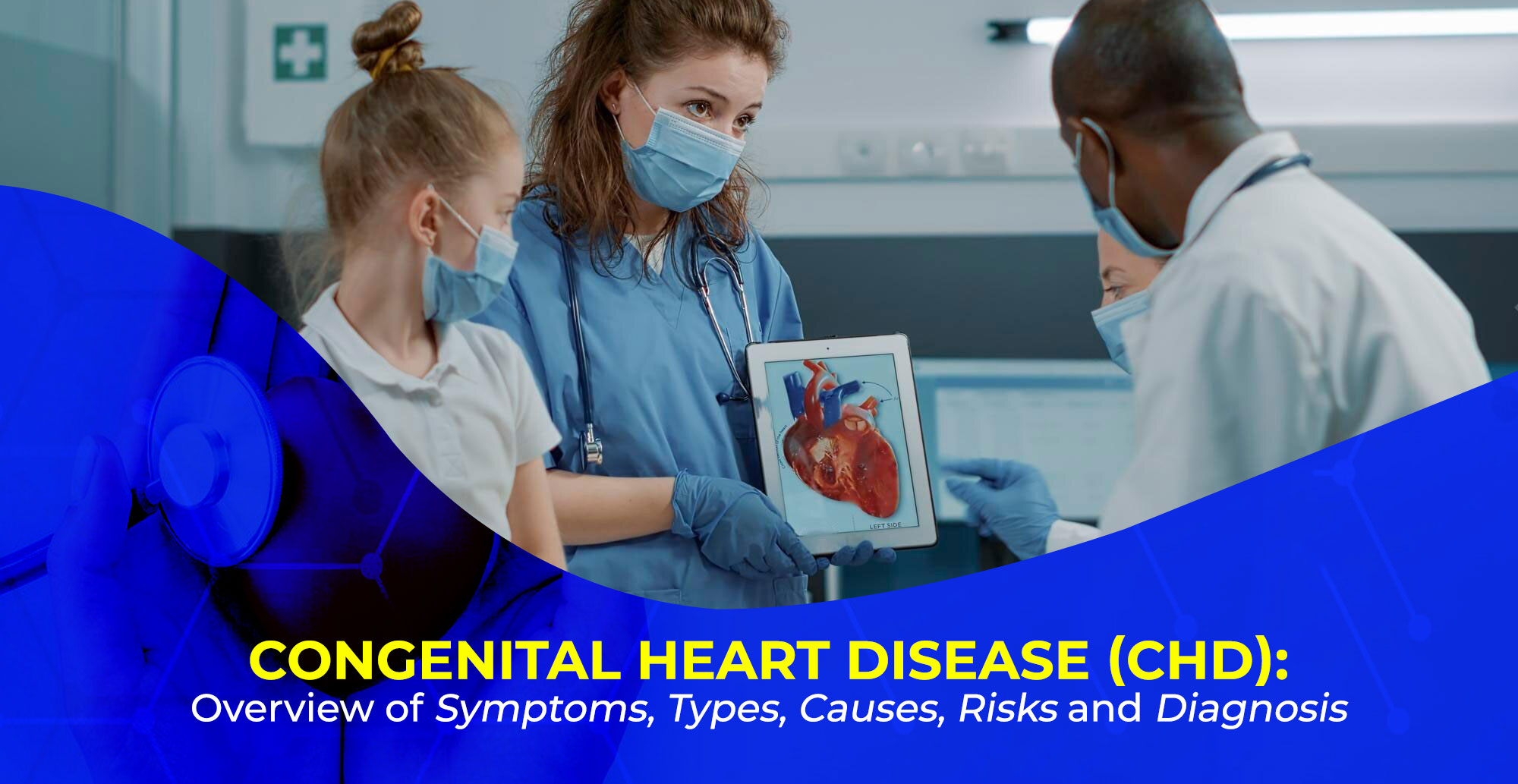Subtotal $0.00
Table of Contents
ToggleCongenital Heart Disease (CHD):
Congenital heart disease stands as the most time-honored beginning anomaly globally, affecting approximately 200,000 newborns yearly. However, advancements in diagnostic abilities allow healthcare vendors to perceive most of those anomalies before birth, with a few detected postnatally.
Nearly 1 out of every a hundred babies (it’s approximately 1 percent) is born with a heart illness each year in USA. Approximately 25% of affected infants necessitate surgical intervention within their first year of existence.
Also, congenital heart disease (CHD), the most common birth defect in India, affects about 9 out of every 1,000 children. About 25% of affected babies require surgery in the first year of life.
This condition entails structural irregularities in the heart present from birth, stemming from abnormal prenatal heart development. Such abnormalities alter the blood flow within the heart, often resulting in issues like septal defects or dysfunctional valves. Fortunately, modern medical advancements afford those born with congenital heart defects the opportunity for extended, healthy lives. Understanding the Development of Congenital Heart Diseases
While the precise reasons of congenital heart diseases continue to be elusive, structural defects and flawed fetal heart development normally contribute to their occurrence. Several ability elements encompass abnormalities in chromosome quantity and structure, maternal exposure to pollutants like the ones discovered in cigarette smoke or leisure pills, viral infections in the course of pregnancy, and maternal persistent ailments along with diabetes or autoimmune sicknesses.
What are the symptoms and signs of congenital heart disease?
Though instances of undetected Congenital heart disease are uncommon, vigilance for capability indicators is crucial. Symptoms might also encompass speedy heartbeat, cyanosis (manifested as bluish discoloration of the pores and skin, nails, or lips), shortness of breath, unexplained fatigue, swelling in extremities or the face, coronary heart murmurs, weakened pulse, bad blood movement, chest pain, strange heart rhythms, and feeding problems in toddlers.
What is the classification of congenital heart disease types?
Medical experts categorize Congenital heart disease into two primary groups: cyanotic (associated with decreased oxygen tiers) and non-cyanotic (related to unusual blood movement). Examples of cyanotic defects include left and right heart obstructive lesions, mixing lesions, truncus arteriosus, and transposition of arteries. Non-cyanotic defects contain situations like aortic stenosis, atrial septal disorder, bizarre valve characteristic, and pulmonary stenosis.
What are the associated risk factors for congenital heart disease?
Several significant factors elevate the risk of congenital heart disease in infants, including a family history of heart disease, certain medications taken during pregnancy, maternal smoking or alcohol consumption, exposure to rubella during pregnancy, maternal obesity, and fetal or chromosomal abnormalities.
How do you diagnose congenital heart disease?
Diagnosis typically occurs through prenatal risk assessments or postnatal physical examinations. In rare cases where symptoms remain unnoticed until adulthood, a diagnosis may occur later in life. Common diagnostic tests include fetal echocardiograms, chest X-rays, electrocardiograms (ECG), pulse oximetry, echocardiograms, stress tests, and heart CT scans or MRIs.
What are the treatment and prevention strategies for congenital heart diseases?
While some cases may resolve without treatment, others may require immediate surgical intervention following birth. Treatment modalities include cardiac catheterization, oxygen therapy, medications to regulate blood pressure, heart surgery, and implantable heart devices. Reducing risk factors through lifestyle adjustments and adherence to prenatal screening protocols also plays a crucial role in prevention.
How to live with congenital heart disease?
Individuals with congenital heart disease require ongoing medical care, adherence to a healthy lifestyle, and regular check-ups. Participation in cardiac rehabilitation programs and support groups can aid in managing the condition effectively.
Conclusion:
Advancements in care and treatment have significantly improved outcomes for individuals with congenital heart disease, with over 90% of affected children leading comfortable lives into adulthood. Timely intervention and comprehensive medical management enhance the prospects of living with this condition conservatively.
For prenatal screening, heart diagnostics, or cardiac risk profiling, consider Metropolis Labs, offering reliable and affordable services conducted by skilled technicians employing state-of-the-art technology. For appointments or inquiries, please reach out to us.





Comments are closed